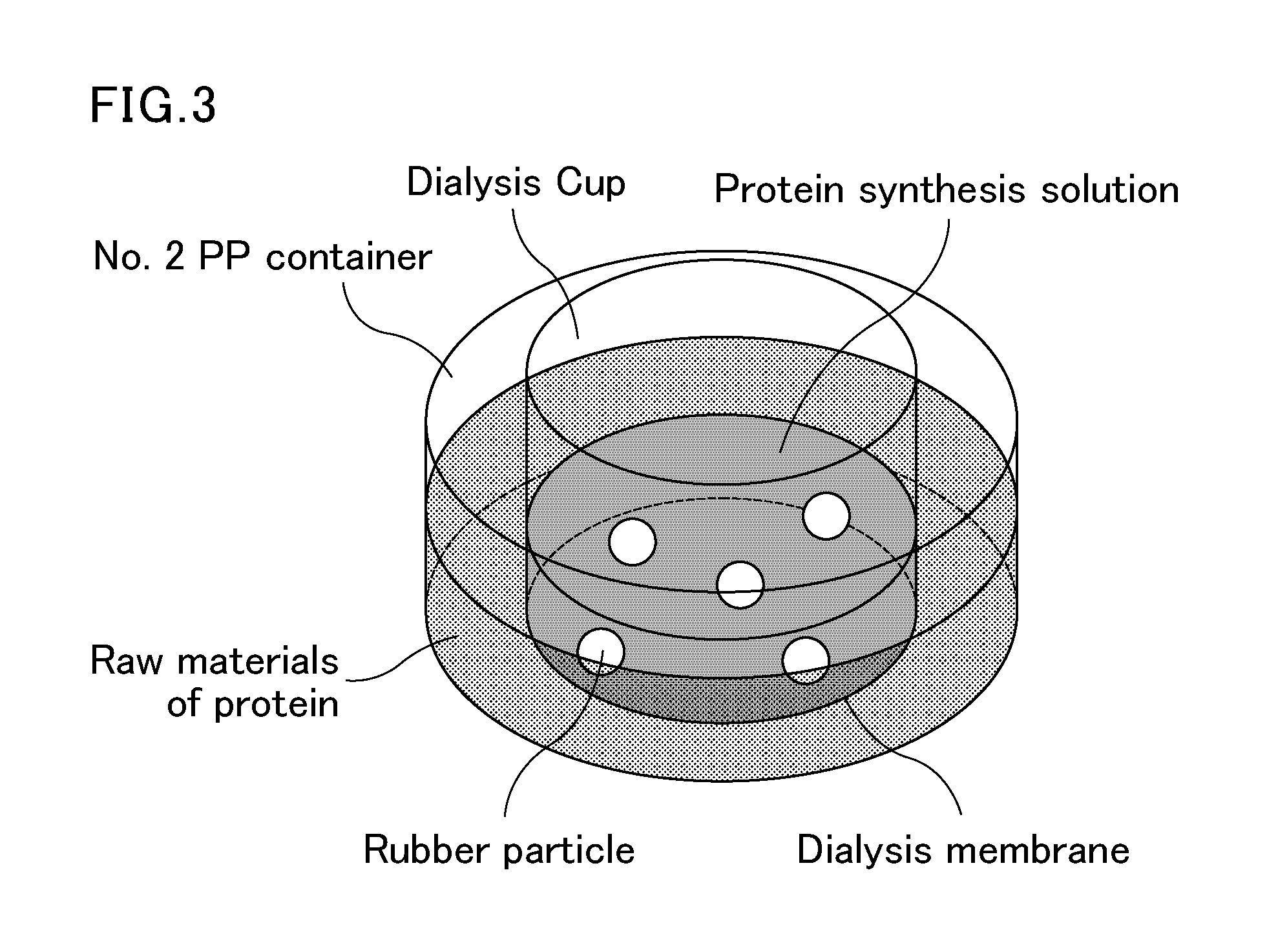Method for producing polyisoprenoid, transformed plant, method for producing pneumatic tire and method for producing rubber product
a technology of polyisoprenoid and transformed plant, which is applied in the direction of transferase, peptide sources, other domestic articles, etc., can solve the problems of insufficient understanding of the association between cpt and cpt, limited period during which natural rubber can be extracted, and difficult to greatly increase the production of natural rubber using hevea brasiliensis, etc., to achieve the effect of enhancing the activity of the cpt family protein, enhancing the activity of rubber
- Summary
- Abstract
- Description
- Claims
- Application Information
AI Technical Summary
Benefits of technology
Problems solved by technology
Method used
Image
Examples
example 1
Extraction of Total RNA from Hevea Latex
[0245]Total RNA was extracted from the latex of Hevea brasiliensis by the hot phenol method. To 6 mL of the latex were added 6 mL of 100 mM sodium acetate buffer and 1 mL of a 10% SDS solution, and then 12 mL of water-saturated phenol pre-heated at 65° C. The mixture was incubated for 5 minutes at 65° C., agitated in a vortex, and centrifuged at 7000 rpm for 10 minutes at room temperature. After the centrifugation, the supernatant was transferred to a new tube, 12 mL of a phenol:chloroform (1:1) solution was added, and the mixture was agitated by shaking for 2 minutes. After the agitation, the resulting mixture was centrifuged again at 7000 rpm for 10 minutes at room temperature, the supernatant was transferred to a new tube, 12 mL of a chloroform:isoamyl alcohol (24:1) solution was added, and the mixture was agitated by shaking for 2 minutes. After the agitation, the resulting mixture was centrifuged again at 7000 rpm for 10 minutes at room t...
PUM
| Property | Measurement | Unit |
|---|---|---|
| Concentration | aaaaa | aaaaa |
Abstract
Description
Claims
Application Information
 Login to View More
Login to View More - R&D
- Intellectual Property
- Life Sciences
- Materials
- Tech Scout
- Unparalleled Data Quality
- Higher Quality Content
- 60% Fewer Hallucinations
Browse by: Latest US Patents, China's latest patents, Technical Efficacy Thesaurus, Application Domain, Technology Topic, Popular Technical Reports.
© 2025 PatSnap. All rights reserved.Legal|Privacy policy|Modern Slavery Act Transparency Statement|Sitemap|About US| Contact US: help@patsnap.com


